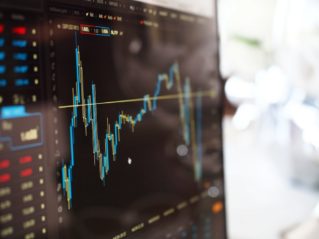Day Trading: A Complete Guide to the World of Short-Term Trading

Introduction
In today’s fast-paced financial markets, day trading has become increasingly popular among private individuals. This article provides an in-depth overview of day trading, including its definition, various types, popular strategies, quantitative measurements, differences between approaches, and a historical analysis of its pros and cons. Read on to learn more about this exciting and potentially lucrative trading practice.
I. What is Day Trading?
Day trading is a short-term trading strategy that involves buying and selling financial instruments within the same trading day. Traders aim to profit from small price fluctuations in highly liquid markets such as stocks, currencies, commodities, and derivatives. Unlike long-term investing, day traders do not hold their positions overnight, which reduces the potential risks associated with market volatility.
Types of Day Trading

1. Scalping
Scalping is a popular day trading technique that involves making multiple trades throughout the day, aiming to profit from small price movements. Traders using this approach often hold positions for only a few seconds to a few minutes.
2. Momentum Trading
Momentum traders focus on stocks or other financial assets with significant price moves. They enter positions when they identify a price trend in a particular direction and exit before the trend reverses. Technical indicators and chart patterns play a crucial role in identifying potential momentum opportunities.
3. Range Trading
Range traders identify stocks or assets that trade within a defined range and aim to profit from price fluctuations within that range. Traders using this approach typically buy near support levels and sell near resistance levels, assuming that the price will stay within the range.
Quantitative Measurements
Quantitative analysis plays a vital role in day trading as traders seek to identify patterns and trends that can lead to profitable trades. Some key quantitative measurements used in day trading include:
1. Volume
Monitoring trading volume helps day traders identify liquidity levels and understand the intensity of price movements. Higher trading volumes often indicate stronger price trends and increased trading opportunities.
2. Volatility
Volatility measures the extent of price fluctuations in a financial instrument. Day traders often prefer highly volatile assets, as they offer greater profit potential. Volatility can be measured using technical indicators such as the Average True Range (ATR).
3. Average Daily Range
The Average Daily Range (ADR) represents the average price range of an asset within a single trading day. Traders use ADR to set profit targets and determine the potential profitability of a trade.
[D
Differences in Day Trading Approaches
Different day traders employ various strategies and techniques depending on their trading style and risk tolerance. Some notable differences include:
1. Timeframe
Day traders can be classified into different timeframes. Some prefer short-term intraday trading, while others may focus on swing trading, which involves holding positions overnight or for multiple days. The choice of timeframe depends on individual preferences and trading goals.
2. Technical vs. Fundamental Analysis
While some day traders rely heavily on technical analysis, using charts and indicators to make trading decisions, others incorporate fundamental analysis to identify news-driven catalysts that can move prices. Combining both approaches can provide a more comprehensive view of the market.
Historical Analysis: Pros and Cons of Day Trading
Day trading presents unique advantages and disadvantages that traders should consider. Some pros include:
1. Potential for Fast Profits
Day trading provides the opportunity for quick profits due to the frequent entry and exit of trades. Successful day traders can take advantage of small price movements and potentially generate substantial returns.
2. Greater Control and Flexibility
Day traders have full control over their trades and can react quickly to market events. They can enter and exit positions at their preferred times and are not subject to overnight risks.
However, day trading also poses certain challenges:
1. High Level of Competition
Day trading attracts a large number of participants, including professional traders and institutions. As a result, competition can be intense, making it challenging for individual traders to consistently outperform the market.
2. Emotional and Psychological Pressure
Day trading requires discipline, patience, and the ability to manage emotions effectively. The fast-paced nature of day trading can lead to stress, anxiety, and poor decision-making if traders are not adequately prepared.
Conclusion
Day trading offers exciting opportunities for private individuals to actively participate in the financial markets. With a thorough understanding of its various types, quantitative measurements, differences between approaches, and a historical analysis of its pros and cons, traders can make informed decisions and potentially profit from short-term price movements. Whether you prefer scalping, momentum trading, or range trading, remember to stay disciplined, continuously learn, and adapt to the dynamic nature of day trading for long-term success in this challenging yet rewarding field.
FAQ
What are the different types of day trading?
What are the pros and cons of day trading?
What is day trading?
Fler nyheter
Köpa guld i Östersund: Guide till trygga och prisvärda köp
Introduction In today’s fast-paced financial markets, day trading has become increasingly popular among private individuals. This article provides an in-depth overview of day trading, including its definition, various types, popular strategies,...
02 december 2025
Från TV till TikTok: Marknadsföringens evolution
Introduction In today’s fast-paced financial markets, day trading has become increasingly popular among private individuals. This article provides an in-depth overview of day trading, including its definition, various types, popular strategies,...
08 november 2025
Hur teknik har förändrat sättet vi gör affärer på
Introduction In today’s fast-paced financial markets, day trading has become increasingly popular among private individuals. This article provides an in-depth overview of day trading, including its definition, various types, popular strategies,...
06 november 2025
En detaljerad guide till att köpa aktiebolag
Introduction In today’s fast-paced financial markets, day trading has become increasingly popular among private individuals. This article provides an in-depth overview of day trading, including its definition, various types, popular strategies,...
01 november 2025











